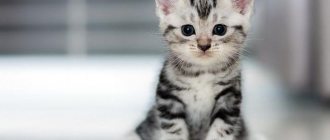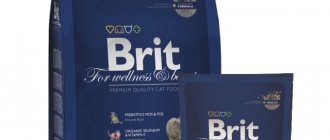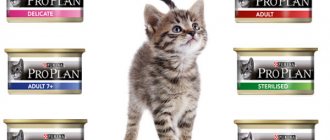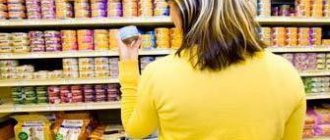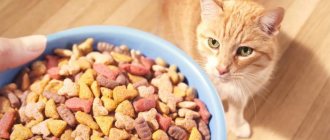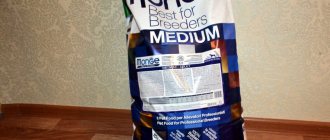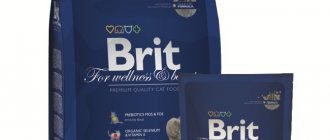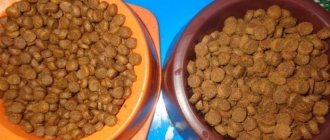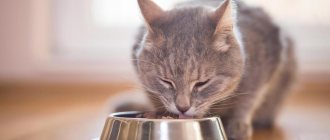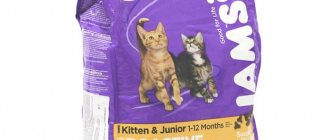Dry food has become a part of the daily lives of busy cat owners. They are easy to use and animals love them. Manufacturers assure the benefits of this product, but numerous reviews claim the negative impact of such a diet. Therefore, before purchasing, you should find out whether dry food is harmful for cats. Veterinarians do not give a definite answer, because much depends on the composition of the food and the characteristics of the animal itself. This article will help answer this and other questions related to cat nutrition.
Benefit or harm?
This method of feeding is in great demand among animal owners. The advantages of feed are its long-term storage and balance. You can add food for a day and not be afraid that the animal will be hungry in the absence of the owner. Cats eat food with pleasure, and this is not surprising.
But is dry cat food harmful? Many well-known brands of products contain components that stimulate appetite and improve taste. Thanks to modern technology, low-quality feed appears attractive to animals. Eating such a product becomes addictive, and the cat begins to refuse other food.
Many foods are oversaturated with carbohydrates, which are harmful to animals. Such a diet can negatively affect the condition of the stomach and kidneys. 24/7 access to food causes obesity in cats, which is unnatural for animals. It is better to use two meals a day.
Dry food is the main cause of urolithiasis in cats. The reason is insufficient saturation of the body with fluid. Also, high carbohydrate content in food increases sugar levels and can lead to diabetes. To avoid this, you should choose meat-based food.
Supplements
Dry food must contain sources of fiber - plant fibers that are not absorbed by the body, but are necessary for intestinal motility. Supplements in the form of vegetables, fruits and berries are good sources of fiber, although some foods also contain cheap cellulose, which is too rough for a cat's intestines.
An important and useful addition to the diet are probiotics and prebiotics, which have a beneficial effect on digestion, Yucca Schidigera extract, which reduces the odor of excrement, and fennel, which reduces gas formation.
Recommendations for using dry food
When using this food you need to follow some rules. First of all, you cannot mix ready-made food with natural food, since the imbalance of nutrients is disrupted. If a problem occurs, it will be difficult to understand the real reason. Also, do not change the brand of food often. This leads to poor absorption of substances and causes disturbances in the body. If you need to change food, you should do this gradually over 1-2 weeks, adding a new product and increasing its quantity.
Cats by nature drink little water, and dry food is recommended to be washed down with plenty of liquid. Therefore, for better absorption, you need to ensure that there is always water next to your food bowl. Veterinarians recommend diluting the diet with wet food. When feeding kittens, you should pay attention to the packaging labeling, which should indicate the age at which the product can be consumed.
Preservatives, flavors, vitamins and minerals
Dry food may well contain flavoring additives, because the food should not only be healthy, but also appeal to cats. Modern foods often contain various hydrolysates obtained from natural products, such as liver; they are completely safe for cats and give the food an attractive aroma.
In order for dry food to be stored for a long time, preservatives are added to it, and high-quality dry food uses natural antioxidant complexes based on rosemary, which are absolutely safe for animals. But it is better to avoid synthesized chemical compounds, because the individual reaction to them is quite unpredictable.
Since dry food is produced using high temperatures, some of the beneficial substances from the raw materials are inevitably destroyed, so vitamin and mineral complexes are added to the diet. It is important that the product packaging contains a complete list of substances with dosage information.
Which food is better to choose?
When choosing a diet for a cat, you should focus on the composition, which will make it clear whether feeding your cat dry food of this brand is harmful. The highest quality food is made from animal meat and ocean fish. They contain all the necessary nutrients and do not contain harmful components.
A high-quality product will not cause allergies and other unpleasant consequences, but, on the contrary, will help prevent them. Often, special dry food is used to treat diseases. Many are put off by the price of such “cat joy”, but considering the cost of fresh food, it is quite justified. And if you calculate the effort and time that will be required to prepare a balanced menu for your pet, then dry food will be a priority.
Carbohydrates
It is impossible to make dry food without using carbohydrate components, because without them it will not be possible to create the dense mince that makes up each granule of food. Another question is that technologically there are not so many sources of carbohydrates required, and if the feed consists mainly of them, then the manufacturer simply decided to save money. Most often, wheat is used for this purpose, which is the most difficult for cats to digest and in large quantities contributes to excess weight gain and can even cause the development of diabetes. It is best to avoid this component in feed.
Is Kitekat and Whiskas dry cat food harmful?
Since cats are carnivores, their digestive system is not adapted to food of plant origin. Meat products completely lack carbohydrates and other vitamins that animals need. But wild cats get the necessary substances from the stomachs of the herbivores that they feed on. At the same time, they arrive to predators already in a processed form, which allows them to absorb some of the carbohydrates. The resulting dietary fiber helps cleanse the intestines. But apartment residents can only rely on a person. The owner takes responsibility and must know whether the dry cat food he feeds his pet is harmful.
“Kitekat” and “Whiskas” are unbalanced or poorly balanced feeds and do not contain all the necessary nutrients. Their use often leads to various disorders in the cat’s body. These feeds belong to the economy class and contain meat waste: skin, intestines, heads, as well as offal with low nutritional value. They contain too much corn, wheat and rice flour. In this case, you can answer the question positively: is dry food harmful for cats and kittens? Daily consumption of such food leads to gastrointestinal disorders, kidney and liver diseases, as well as hair loss. This product negatively affects the growth and development of kittens. Carbohydrates are not digested and disrupt intestinal function.
Wet and dry food: which is best for your pet?
From improving joint function to adding shine to fur, this is the range of enticing buzzwords and eye-popping promises that dog and cat food manufacturers use to accompany their products. Even if you don't fall for the pseudoscientific trends that suggest feeding your pets raw food, "organic pet food," vegan kibble, and the like, you may still be interested in some questions about how to better feed your meowing or barking friend. And here is one of the most important: which food is better - wet or dry ?
Let's start with the good news: any type of food can provide your animal with the nutrition it needs to grow, run, play and enjoy life. You can verify this by reading the “Nutrition Adequacy Statement” that is required to accompany any (commercial) pet food. In North America, these statements are regulated by the Association of American Feed Control Officials (AAFCO), and there are similar agencies in Europe and other regions. A nutritional adequacy statement looks something like this: “a complete and balanced diet for all...” where instead of an ellipsis, the type of pet the food is intended for (adult dogs, cats of all sizes, lactating females, etc.) is indicated.
If the food comes with this declaration, then by following the package instructions (for example, ½ cup of kibble per day), you can rest assured that your pet is getting all the calories, nutrients, vitamins, minerals and proteins he needs. Many companies also provide instructions if you want to feed your pet both wet and dry food.
While both types of food can provide complete nutrition for an animal, there are a number of specific reasons why a pet owner (or pet) may choose one type over the other.
What food does your pet prefer?
Wet food
Before the introduction of the now familiar extruded kibble in the 1950s, the market was dominated by canned wet dog and cat food. The first canned dog food was called Ken-L-Ration
and was made from horse meat.
It hit the market in 1922, while the first canned cat food came only eight years later, in 1930. Ken-L-Ration
.
Although wet food is no longer the top-selling food for cats and dogs, it still forms at least part of the diet of many of these animals.
Pros of wet food
Of the specific advantages that wet food has, the most important is the preference that our pets usually have for this food. Perhaps it has to do with its sensory characteristics (moisture, delicate texture, stronger smell, stronger taste), but it is also possible that macronutrients and serving size play a role.
Wet and dry foods have similar levels of protein and fat, but the proportion of carbohydrates in dry foods is much higher. These carbohydrates are not a problem for our pets: dogs digest them easily, cats do the same, although a little worse. But the ease of digestion of carbohydrates does not mean that their higher level in dry food does not play any role. Unlike dogs, cats cannot taste sugar or sweetness in general, but are very sensitive to the taste of amino acids (the building blocks of proteins). According to some scientists, cats prefer wet food because its nutrient profiles closely match those of their natural foods.
If you pay attention to the ratio of volume and mass, it should be noted that in order to get a certain amount of calories, pets need a portion of wet food, the volume of which is larger than the volume of dry food. So a portion of wet food may seem larger to the animal than a portion of dry food.
Be that as it may, our pets often like wet food more than dry food. Therefore, if your animal is sick, old or too thin and therefore needs to get it to eat more, wet food (either on its own or mixed with kibble) can be a good help in this matter.
Now let's note other important advantages of wet food:
- Easily eaten by animals that have lost several or even all of their teeth. (Dental problems are by no means uncommon in cats and dogs and can cause them such pain that the animals choose to fast rather than chew kibble).
- It is easy to mix medications and various additives into wet food.
- It's easy to add so-called "flavor enhancers" to encourage animals to eat.
- Wet food is usually given only at certain times, which can make mealtime such a significant event for the animals that it becomes easier to train them and their attachment to their owners strengthens.
Cons of wet food
The high palatability of wet food is a double-edged sword. An overweight pet can be helped to consume fewer calories and become leaner by feeding less palatable kibble. However, it must be taken into account that in this case the animal may feel less full, since dry food, which contains the same number of calories as wet food, has a smaller volume.
Wet food is usually sold in cans or sachets. They are more expensive than bags of pellets, take up more space, and sometimes require a tool to open. Opened and unused wet food needs to be covered with something (there are many special devices sold for this) and placed in the refrigerator, where the food, being next to human food, can smell very unpleasant (even high-quality canned food stinks, in my opinion). undeniably), thereby creating a huge problem for a home that is strictly vegan, vegetarian or kosher.
Since wet food cannot be left at room temperature, it should be given to pets when it is time to feed. This may not be feasible because people have other things to do. Anything your pet doesn't eat will likely have to be thrown away, and the food bowl should be washed every time after feeding, whereas with dry food it can be cleaned much less frequently.
Dry food
It is believed that the first commercial dry dog food appeared in 1860, and it was invented by James Spratt. Spratt's dog biscuits were reminiscent of current dog treats such as Milk-Bones
.
In addition, Spratt is believed to have produced the first commercial dry cat food. Purina Puppy Chow
.
However, extruded dry pet food did not exist until the 1950s. Purina pioneered the use of extrusion in the manufacture of this product.
.
Having established the production of granules for both dogs and cats, it began supplying the market with Purina Puppy Chow
Purina Friskies
in 1962 .
Pros of dry food
One of the main advantages of dry food is its long shelf life. This allows you to buy granules for future use. Using them to feed your pet makes it possible not only to visit the pet store less often, but also to save money, because a calorie of dry food costs less than a calorie of wet food. It is especially profitable to buy pellets in bulk. Since dry food retains its nutritional properties for a long time at room temperature, you can pour enough kibble into the bowl at one time to allow your animal to eat on its own schedule (this is especially valuable for pets who love to “graze” at the bowl). In addition, dry food can be loaded into a smart automatic feeder or into an auto feeder with a large tank that only requires refilling once every few days. Having dry (rather than wet) food on hand is also useful in emergency situations, for example, in case of a power outage when the refrigerator stops working.
Another important benefit of granules is their effect on pets’ teeth. According to a number of scientific studies, there is a direct connection between the consumption of dry food and dental health. Dental pellets are specially designed to combat plaque and gingivitis in dogs and cats, but regular pellets are also very effective in this regard.
Why dry, rather than wet, food helps eliminate plaque is simple to explain: the more your pet has to chew, the more he scrapes off all the excess from his teeth. This is why chewing bones is beneficial for dogs. It is clear that all kibble food requires longer chewing than wet food, but dry food manufacturers strive to maximize its dental benefits. To help animals chew longer and better scrape plaque off their teeth, dog food granules began to be made cross-shaped rather than round. For the same purpose, we increased the surface area and volume of cat food pellets. In addition, similar to the fluoridation of our toothpaste and drinking water, many types of dental kibble food contain substances that prevent the formation of plaque.
Let's note other advantages of dry food:
- The weight and volume of kibble food of one calorie value is lower than the weight and volume of canned wet food of the same value, making it easier to store.
- Packaging kibble requires less material than packaging wet food, which means less waste is generated later.
- Many types of cat and dog toys are suitable for use with dry extruded foods and treats.
- Dry food can be used with feeding mats and other gadgets designed to enrich the lives of cats and dogs.
- If your pet eats food too quickly (which often causes vomiting), you can use a “slow feeder” filled with dry food pellets.
Cons of dry food
In addition to its advantages, dry food also has disadvantages. Let me note once again that high palatability is a double-edged sword: the fact that dry food, as a rule, is not as appetizing as wet food, can be useful if your animal needs to lose excess weight, but harmful if, on the contrary, it needs to lose weight. need to gain weight. Similar to the situation when a lot of food is poured into a bowl at once so that the pet can eat when it wants: if there are several animals in the house, such feeding does not guarantee that they will all be equally well-fed.
One of the important advantages of dry food is that it is convenient to purchase in large quantities, but some of its disadvantages are related to this same aspect. If you cannot or do not want to buy a large bag, then each gram of feed will cost you more. And there can be a lot of good reasons not to buy a bag of dry food. It may turn out that there is no room for the bag, that you don’t have enough money to buy it, that it is too heavy for you, that you do not have a car to bring it home, or that you have reason to fear that your animal will get tired of the purchased food. even before it eats the whole bag.
By the way, if your pet is a picky eater, then you can easily make a mistake when buying granular food. You can buy a small can of wet food for just a few dollars, but often there is no way to buy dry food for less than a few weeks. Scientific evidence shows that both cats and dogs prefer new foods over the food they've been fed for a long time, which may prompt you to switch brands or varieties of your pet's food. This is much easier to do with wet food than with dry food.
One of the disadvantages of dry cat food is its negative impact on the emptying of the cat's stomach by staying in it for too long. It has been proven that in cats, replacing wet food with dry food results in longer gastric emptying times. The shape of the dry food pellets may also have an effect. Why do we care about a cat's stomach emptying rate? It can affect, firstly, your cat’s feeling of fullness (stagnating in the stomach, food can create the illusion of fullness), and secondly, the formation of a hairball. According to some veterinarians, delayed emptying of a cat's stomach contributes to the formation of a hairball in the cat's stomach, since hair that enters the stomach through licking has a long time to curl, accumulate and become a matted ball. This cause-and-effect relationship, however, has not been proven, so take this information with a grain of salt.
Conclusion
At the end of the day, what food is best for your pet depends mostly on you—your pet. Wet or dry food, or a combination of both, can meet your dog or cat's nutritional needs. However, every animal is unique, and as the owner of your pet, it is your responsibility to find the most suitable food for him based on his preferences, medical history, physiology, behavior and many other factors. If you doubt your choice is right, ask your veterinarian! You may even want to consult a veterinary nutritionist.
Finally, I'll throw in a fun tidbit for you: quite often, people are used to test the taste of different types of wet and dry pet food! Although many participants in such studies are paid, I would not volunteer.
Is Royal Canin and Proplan dry cat food harmful?
If they want to save money, manufacturers often add moldy products to the feed, which causes irreparable harm to the animal. Is this dry food harmful for cats? Reviews from veterinarians say that it is better to give preference to medium or premium products. These include feed produced by Royal Canin. They are made from muscle meat tissue, without the use of flavor enhancers and flavoring agents. This food is rich in all the essential nutrients that an animal needs for its daily diet. It helps improve immunity and makes the animal more resistant to stressful situations. Many people are also interested in whether Proplan dry cat food is harmful? No, since all foods are developed taking into account the age characteristics of the cat and its activity. But even premium food can be harmful to the animal if it is not chosen correctly. Any expired product will also negatively affect your pet’s health, so you should pay attention to expiration dates.
Premium food
Any owner of a mustachioed furry animal wants to choose the best food for his pet. But there is a situation when purchasing holistic food is not available due to its high cost. Then premium food comes to the rescue.
Premium class food is quite popular on the one hand, and on the other hand it is represented by a large assortment, the presence of most varieties and a relatively low price.
Also among the feeds of this class are types of medicinal purposes. They are intended both for the treatment of individual diseases and for their prevention.
This food is made from environmentally friendly raw materials according to specially developed standards. They do not contain soy, grains, various dyes and preservatives. And it contains vitamins and minerals that are responsible for the full development of the animal.
List of premium food:
- Innova EVO
- Orijen
- Acana
- Eukanuba
- Pro Plan
- Bosch
- Hill's
How to feed a cat correctly?
It is important to take into account the physiological characteristics of the animal and adhere to certain rules when forming a daily diet.
- A healthy cat eats no more than twice a day. For a pregnant and lactating pet, 4-6 meals a day are suitable.
- It is important to monitor drinking; the animal needs to drink 20-30 ml per 1 kg of weight if the diet consists of natural products or wet food. 3 times more liquid when eating dry food.
- The water bowl should have wide edges because cats don't like their whiskers touching the edges. Liquids should always be available to your pet, especially if their diet consists of dry food.
Carnivores (cats, dogs, wolves, tigers and others).
The main anatomical features of carnivores include:
2:1600
- teeth structure - the presence of sharp fangs designed for tearing meat. The molars are also not suitable for chewing plants; they have a triangular shape and jagged edges, which allows them to make cutting movements like scissors.
- the movement of the lower jaw when chewing is vertical (up and down), which allows the mouth to open wide when swallowing large pieces of meat
- a short digestive tract in which, due to the acidic environment, animal products (proteins and fats) are easily and quickly digested. The pH of the gastric environment in cats and dogs is maintained at about 1-2, which allows not only to quickly break down proteins, but also to destroy bacteria present in spoiled meat. That is why, if you feed a dog meat that has already smelled spoiled, in most cases this will not lead to any negative consequences. But if you feed spoiled porridge, indigestion or even poisoning to the animal is guaranteed.
- lack of amylase in saliva. Enzymes that break down carbohydrates are produced by the pancreas in carnivores.
Natural food
If the owners decide not to use food, but to prepare food for their pet themselves, then they need to know that it differs from “human food”. It should not contain spices, salt, oils and other components familiar to people. Self-preparing food for your animal, rich in vitamins, increases your pet’s life expectancy by 30% when compared with cats eating dry food. The main disadvantage of the method is the complexity of preparation and the fragility of the feed.
To prepare natural food for cats, use: beef, poultry, oatmeal, vegetables. Soups are prepared using meat broth. By-products can be given raw, but they should be pre-treated with boiling water and chopped. To prevent your cat from becoming constipated from natural food, you need to dilute the diet with vegetables and cereals. You should not feed your animal fish, especially if you have urolithiasis. It is better to mix milk with water or remove it from the cat's menu, as it can cause diarrhea. Also, you should not give foods that contain bones; they can get stuck in the throat or injure the mucous membrane. Chicken skin has a bad effect on the stomach; it can stay in it for a long time without being digested, and fatty pork can cause upset. Feeding an animal warm food irritates the mucous membrane less than cold food.
Herbivores (cows, horses, sheep, antelopes and others)
Their body is maximally adapted to digest carbohydrates and other nutrients obtained from plants.
2:2242
All herbivores are characterized by common anatomical features:
2:128
- the structure of molars (flat and rectangular), ideally suited for grinding and crushing coarse plant stems. The lateral mobility of the lower jaw (from side to side) is clearly expressed, facilitating chewing movements that promote chewing of plants
- long digestive tract - the length of the intestines can be almost 10 times the length of your own body, which ensures better absorption of indigestible fiber, which is rich in plant foods
- Saliva contains the enzyme amylase, which helps digest carbohydrates. Therefore, herbivores chew vegetation thoroughly to ensure that it is mixed with amylase.
How to plan a diet correctly?
The cat can be fed mixed, using natural food and food at the same time. But this method is considered the worst. You should not mix natural food with wet or dry food, except in cases of transferring the animal to another type of food. The animal’s body gets used to a certain feeding option and produces the necessary enzymes for breakdown. You can mix dry and wet food, but preferably the same brand.
So, whether dry cat food is harmful for cats depends on the brand and its composition. For your animal’s diet, it is better to use premium products that contain meat rather than food waste, or prepare natural food yourself. You can combine meals, but with extreme caution. In any case, you should not save, as this affects the cat’s health.
The best holistic food
The most suitable cat food is holistic food. It is distinguished by a high content of animal proteins and fats, and is as close as possible to the diet of an animal in the wild.
Holistic dry food contains natural meat or fish with a mass fraction of more than fifty percent. Also contains natural proteins in the amount of thirty percent.
Brown rice, peas and lentils provide healthy plant protein. And berries, fruits and vegetables make up for the fiber deficiency in such a product.
This product is very loved by animals precisely for its quality, since the list of ingredients does not contain dyes, flavors, preservatives, or flavor enhancers.
By consuming holistic food, the cat receives the substances necessary for health. Thanks to this product, the animal is active, cheerful, has regular bowel movements, and waste products have almost no odor.
Holistic class food:
- Acana
- Pronature Holistic
- Innova Evo
- Holistic Blend
- Almo Nature Holistic
Omnivores (humans, pigs, bears)
Omnivores can eat both animal and plant foods.
2:2209
Common anatomical features of omnivores are:
2:112
- sharp fangs and flat molars, which makes it possible to tear and subsequently chew (grind) food
- the average length of the digestive tract, which allows you to adapt to the digestion of both animal and plant proteins
- Saliva contains amylase, an enzyme for digesting carbohydrates. We dwelled on all this in such detail that owners of dogs and cats themselves could draw conclusions that the anatomical features of our domestic predators clearly classify them as carnivores, adapted for feeding almost exclusively on meat
- teeth and jaws are adapted to tearing meat and swallowing it in large pieces, without chewing
- simple and short gastrointestinal tract, not adapted for digesting plants
- high acidity of gastric juice (in carnivores pH=1, and in humans pH 4-5)
- There is no amylase in saliva, since there is no need for primary food processing for better digestion of carbohydrates
- In humans, food retention in the gastrointestinal tract occurs for approximately 45 hours, in dogs – about 20, in cats – 13-15. This means that the microflora of the digestive tract of cats and dogs is significantly different from the microflora of humans
But the diet of predators consists not only of animal products. After a successful hunt, wild animals eat the carcass almost completely, along with the contents of the stomach and intestines, so, although in small quantities, plant foods are also present in the diet. Now answer, does traditional porridge with meat or fish meet the needs of a predator that are inherent in your cat or dog by nature? In addition, I would like to note that high-quality meat is not always bought for animals; in most cases it is “meat for animals”, it is much cheaper. But behind this cheapness are most often sick or forcedly slaughtered animals, the meat of which is not suitable for human consumption, or offal that has low nutritional value.
2:3773
In this case, the general benefits of such meat are very doubtful. Yes, filling the stomach and intestines with cereals suppresses the feeling of hunger for a while, but cannot provide the animal with the necessary amount of minerals and vitamins.
2:433 2:443
In addition, it is very difficult to calculate the required amount of vitamins, macro- and microelements needed for an animal at this stage of life (pregnancy, old age, post-operative recovery) at home.
2:863 2:873
Here, dry industrial food has undeniable advantages, because they are developed by professionals, and entire research institutes with laboratories are created to calculate the required amount of nutrients and calories needed by animals at each specific period of life. So gradually we moved on to the next question:
2:1559 2:9
All pet foods are divided into three large groups:
2:244
- economy class feed,
- medium-grade food (custom)
- premium food.
